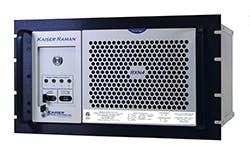Kaiser Optical Systems Releases Raman Rxn Analyzer Suite
Kaiser Optical Systems, Inc., an Endress+Hauser company, releases its embedded Kaiser Raman Rxn analyzer suite, featuring intuitive Raman RunTime embedded control software. Kaiser Raman embedded analyzer collects in situ process measurements, enabling real-time process monitoring, optimization and control. With this 24/7 automation, companies can maintain a continuous pulse on the safety, quality and efficiency of their operations—whether in laboratory or manufacturing settings. Kaiser Raman Rxn analyzers perform self-monitoring and self-diagnostics to ensure the validity of each measurement, and to enable seamless model transferability and equipment scalability from lab-to-process.
The latest Raman Rxn portfolio, comprised of the Raman Rxn2 and Rxn4 base analyzer models, integrates analyzer and control software in a fixed purpose device with built-in intelligence. Kaiser Raman technology also communicates with external systems over networks using standard automation protocols, providing companies with reliable chemical composition measurement with secure 24/7 connectivity. By doing so, the analyzers enable an Industry 4.0 strategy of increased data security, system integration, and automated communication.
To ease maintenance, Raman Rxn2 and Rxn4 analyzers perform self-calibration, utilizing spectral correction methods in applications when periodic system calibration is not required. Additionally, they provide flexible installation options including benchtop, mobile wheeled cart, and rack-mounted, or in stainless-steel enclosures for lab, pilot plant, or dedicated manufacturing applications. The rugged analyzers and applicable sampling probes are also certified for installation in hazardous areas.
Kaiser Raman embedded analyzers can be configured with 532, 785 or 1000 nanometer excitation wavelengths with the ability to measure up to four channels. Measurements can be taken inline, online or at-line. Common applications include analyzing material quality, monitoring molecular reactions, aiding basic science research, assuring quality and identifying unknowns.
